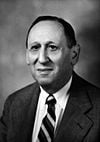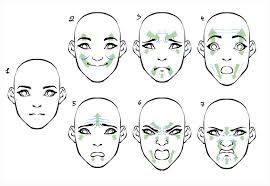Conversation 16: A proposal for the stages of internalizing the human characters and the possible context for autism
Greetings
We will once again remind those who join the blog that in the model we propose for the "self", one must first distinguish between the “primary self”, which is actually the basic biological core consisting of a number of innate structures as shown in figure number 1 and which is subject to development during life and the “secondary”, or social self, which is a structure that develops during a person's exposure to social influence, and consists of internalizations of figures (or characters) significant to the person, originating either from external groups or from the imaginary groups related, for example, to a character from a story, from a myth, from a movie, etc. that had a considerable influence on the person. We note here that at birth [see Figure 1] there are innate patterns for most parts of the self such as for example the "social self" and its parts that form nuclei for a possible future development of these structures.
The physical self is defined as the set of experiences related to the perception of the body, its limits and sensations, and also includes thoughts, attitudes and feelings towards the body, and which begins with the innate physical self which, as mentioned, continues to develop in human life.
The "secondary selves" include 1] the variety of representations of the "I" that originate from attitudes and feelings towards the self and its representations in different periods of life 2] the representations of internalized characters that often originate from significant characters that the person is exposed to during his life but as mentioned there may also be imaginary characters represented in books, movies, etc. that had a considerable influence on man.
3] representations of the "subculture" [subculture refers to social influences in the milieu [environment] in which the person lives and are not necessarily related to a specific person].
And finally we will mention the "reflective self" or the "reflective me", which is defined as a structure that develops following the development of the social self and enables a comprehensive view of the individual's state of awareness and mental expressions.
These internal figures, most of which are internalizations of influential figures in external reality, are shaped during the life, and sometimes following a crisis or trauma or events related to that figure [or alternatively during a significant development such as creating a new meaning for life and re-evaluating positions ans attitudes], there may even be several versions of that figure in a course of life.
This is how it is possible to internalize various external figures that influence the person, but the most important internal internalization is that of what we will call the “dictator-self”. Here it’s about internalizing a character that has a great influence and shapes the person for good and/or bad, that has a great influence on the board of internal characters that build the social "self". To this internal dictator we assume a decisive role and a profound influence on the internalization of external figures [or in professional parlance “external objects”]. The dictator's positions play a central role in making decisions about character internalizations. He decides whether the internalization should be rejected or, if accepted, in what form it will be internalized.
In other words, in a certain sense, we assume that this influential figure is also a kind of internal censor. It should be emphasized that we are not talking or conjecturing concretely about the presence of figures in the inner world as a sort of “little people” but in their representations whose nature and manner of representation in the brain still requires research. We will also note that although we call this figure a "dictator", except for a certain type, his characteristics are not the same as that of a dictatorial ruler over a certain country, but we rather imply that this figure is dominant and influential among the "Directorate of Figures",a kind of its “chairman”.
After this introduction [see previous conversations] this time we will discuss the question of which are, in our opinion, the stages in the internalization of the characters. And then we will suggest where in these stages could hide a disruption in those suffering from autism. We note that this is still an initial model and these steps will undergo further thinking later.
First we will discuss the stages of internalizing the characters. Here we suggest that:
A] At the core of internalization is a need [which is apparently innate] in communication with the significant other.
B] This need uses the brain mechanism of recognizing a human face as a focus or nucleus for building the internalized character [it is possible that developmentally high animals make a similar use of recognizing the face of the species to which they belong and this may allow them to differentiate between their own species and another animal species].
C] The characters are built gradually first as one flat [schematic] figure, usually originating from the mother or the most nourishing and significant figure (by the way, here we enter into a debate with the concepts of the theorists of the object relations theory: a psychodynamic theory that describes the process of the child's mental development in relation to his relationships with other people and the environment. The term "object" refers both to real people surrounding the child, and to internalized figures of others. This theory claims that a baby has first a perception of a partial object such as the mother's breast and not of the mother in her entirety).
D] After that, there develop gradually some relatively flat [schematic] additional figures that apparently belong to the family [or its replacement] , still without a clear hierarchy among the figures. It is going to develop later.
E] Later on, a situation arises where the few characters gain volume and become more complete [in the language of Margaret Mahler, an object relations theorist, this situation may correspond to the situation of "object constancy"] and the hierarchy between them (along with the differentiation or difference between them) is increasing and at the same time other characters are still not internalized but identified as “not belonging to the core family”, [it is possible that the baby's fear of strangers that appears at around 5-7 months of age represents this situation].
F] Other figures begin to be gradually internalized according to their significance for the person [it is possible at this stage that decrease in fear of strangers that starts to vanish at the age of one and a half to two years up to the point of disappearance, represents a behavioral expression of this process].
G] The hierarchy takes shape and one to two internalized dictator-selves [usually father and mother or their replacement] become dominant among other internalized characters.
H] This situation can later develop into a wider number of internalized dictator-selves who are in dialogue with each other, which allows for greater flexibility in relating to oneself and the environment, thus contributing to the development of a better adaptive capacity.
We note that within the framework of the characters there may be a continuum of the relationship between real characters versus internalized imaginary characters. [This probably depends on the mental needs of a person. For example, in a situation where the realistic characters do not satisfy the mental needs of a person, it is possible and this will develop a greater amount of imaginary characters]
There may also be situations in which the representations of the subculture are more or less dominant [this probably depends on the dominance of the subculture in one’s life].
These stages in the of the characters’ internalization may allow a different diagnostic scale in comparison to what is used today and may even create new diagnoses
In relation with these stages, we will now dwell, for example, on the autism disorder.
Autism is a clinical syndrome, characterized by disorders in the field of interpersonal relationships in the social, linguistic and communicative areas. Other characteristics are stereotypic and repetitive behavior and a noticeable disturbance in social skills. The syndrome has additional features that include problems with sensory regulation and may include coordination problems.
In 1943, Dr. Leo Kanner coined the term "early childhood autism". At the same time, a German scientist named Dr. Hans Asperger described a phenomenon similar to classical autism but higher on the autistic continuum that became known as Asperger's syndrome.


In autism there is apparently a problem in internalizing the characters and they are flat and schematic in varying degrees of severity depending on the severity of the autism.
So in severely autistic people, internalized figures of the father and mother are so flat and lacking that in extreme cases they may be hardly internalized or not internalized at all.
Thus Mahler (1952) assumed that autistic children cannot differentiate between their mothers and inanimate objects, and therefore cannot develop emotional ties to them. Mahler believed that the autistic child could withdraw from the emotional demands involved in interpersonal relationships.
We note that there is some evidence that the second stage we propose related to face recognition as a nucleus for internalization is defective in autistics. See the following summaries:
Neurosci Biobehav Rev
2012 Mar;36(3):1060-84.
Face identity recognition in autism spectrum disorders: a review of behavioral studies
Sarah Weigelt , Kami Koldewyn, Nancy Kanwisher
Abstract
Face recognition–the ability to recognize a person from their facial appearance–is essential for normal social interaction. Face recognition deficits have been implicated in the most common disorder of social interaction: autism. Here we ask: is face identity recognition in fact impaired in people with autism? Reviewing behavioral studies we find no strong evidence for a qualitative difference in how facial identity is processed between those with and without autism: markers of typical face identity recognition, such as the face inversion effect, seem to be present in people with autism. However, quantitatively–i.e., how well facial identity is remembered or discriminated–people with autism perform worse than typical individuals. This impairment is particularly clear in face memory and in face perception tasks in which a delay intervenes between sample and test, and less so in tasks with no memory demand. Although some evidence suggests that this deficit may be specific to faces, further evidence on this question is necessary.

Rev Neurol
2003 Jun 16-30;36(12):1186-9.
J R Valdizan , I Zarazaga-Andía, B Abril-Villalba, O Sans-Capdevila, M Méndez-García
Abstract
Introduction: We conducted a survey of the literature on face recognition (FR), an activity that is essential for social relations and their dynamics. Unlike the recognition of non facial objects, this type of recognition is a special process since it is based on the detection of individual features. The most characteristic clinical parameter of autistic subjects is their inability to relate socially, possibly due to the difficulty they have in processing faces, although they are more skilled at recognising objects.
Development: We describe the two mechanisms involved in FR, one based on features and the other referring to the whole. The latter can be further divided into overall processing that allows a whole image to be compared with another previously assimilated image, and the processing of the arrangement of a face that is recognised as a whole. These may correspond to two different neuronal pathways. During the first days of life, the newborn baby has a predilection for faces in their feature and overall aspects, and processing of the arrangement is slower. Visual development in autistic children is erratic, similar to the level of a newborn infant, and their lack of interest for human faces is apparent during the first year of life, as they look at everything as if they were objects, that is, by features.
Conclusions: The analysis of the literature enabled us to determine how FR mechanisms develop in the earliest days of the infant s life. It also highlighted the importance of the integrity of the pathway that facilitates stimulation for the recognition of facial arrangement, which is altered in autistic children perhaps from the peripheral area to the cortex. Further work on peripheral pathways and the fundamental cortical connections that are affected in autistic subjects will help us to understand the inefficiency of their facial arrangement recognition system.

J Autism Dev Disord
2014 Apr;44(4):894-902.
Social smiling and its components in high-risk infant siblings without later ASD symptomatology
Caitlin McMahon Nichols , Lisa V Ibañez, Jennifer H Foss-Feig, Wendy L Stone
Abstract
Impaired affective expression, including social smiling, is common in children with autism spectrum disorder (ASD), and may represent an early marker for ASD in their infant siblings (Sibs-ASD). Social smiling and its component behaviors (eye contact and non-social smiling) were examined at 15 months in Sibs-ASD who demonstrated later ASD symptomatology (Sibs-ASD/AS), those who did not (Sibs-ASD/NS), and low-risk controls (Sibs-TD). Both Sibs-ASD subgroups demonstrated lower levels of social smiling than Sibs-TD, suggesting that early social smiling may reflect elevated genetic vulnerability rather than a specific marker for ASD. Only the Sibs-ASD/AS demonstrated less eye contact and non-social smiling than Sibs-TD, suggesting that different processes, threshold effects, or protective factors may underlie social smiling development in the two Sibs-ASD subgroups.
Since we propose that a "board" of internalized figures contributes to the creation of the "social self", then in autistics in the lower part of the autistic spectrum the social self is defective, very lacking, or even non-existent.
We will also note that autistics demonstrate deficiencies according to the severity of the autism also in mentalization or in other words in their ability to understand the other and his position [THEORY OF MIND].
An interesting question is whether an autistic person in the lower part of the spectrum could develop language since some of them do not speak. We hypothesize that the ability may exist, but perhaps due to the lack of need to communicate with others, this ability does not develop, whereas in Asperger's, which is a relatively high level of development on the autism continuum, there are apparently relatively schematic internalized characters, they have a certain need for social contact and their language is developing.
That's it for now
See you in the next conversation
Dr. Igor Salganik Prof. Josephe Levine
 Prof. Joseph Levine, M.D. is an emeritus associate professor in the Division of Psychiatry, Faculty of Health Sciences, Ben Gurion University in Israel. Prof. Levine is a certified psychiatrist with clinical experience in controlled trials of adult psychiatric disorders and in psychotherapy. He was awarded a NRSAD independent investigator grant for the study of Creatine Monohydrate in psychiatric disorders -- mainly Schizophrenia. He resides and treats patients in Tel Aviv and all of central Israel.
Prof. Joseph Levine, M.D. is an emeritus associate professor in the Division of Psychiatry, Faculty of Health Sciences, Ben Gurion University in Israel. Prof. Levine is a certified psychiatrist with clinical experience in controlled trials of adult psychiatric disorders and in psychotherapy. He was awarded a NRSAD independent investigator grant for the study of Creatine Monohydrate in psychiatric disorders -- mainly Schizophrenia. He resides and treats patients in Tel Aviv and all of central Israel.
Leave a comment